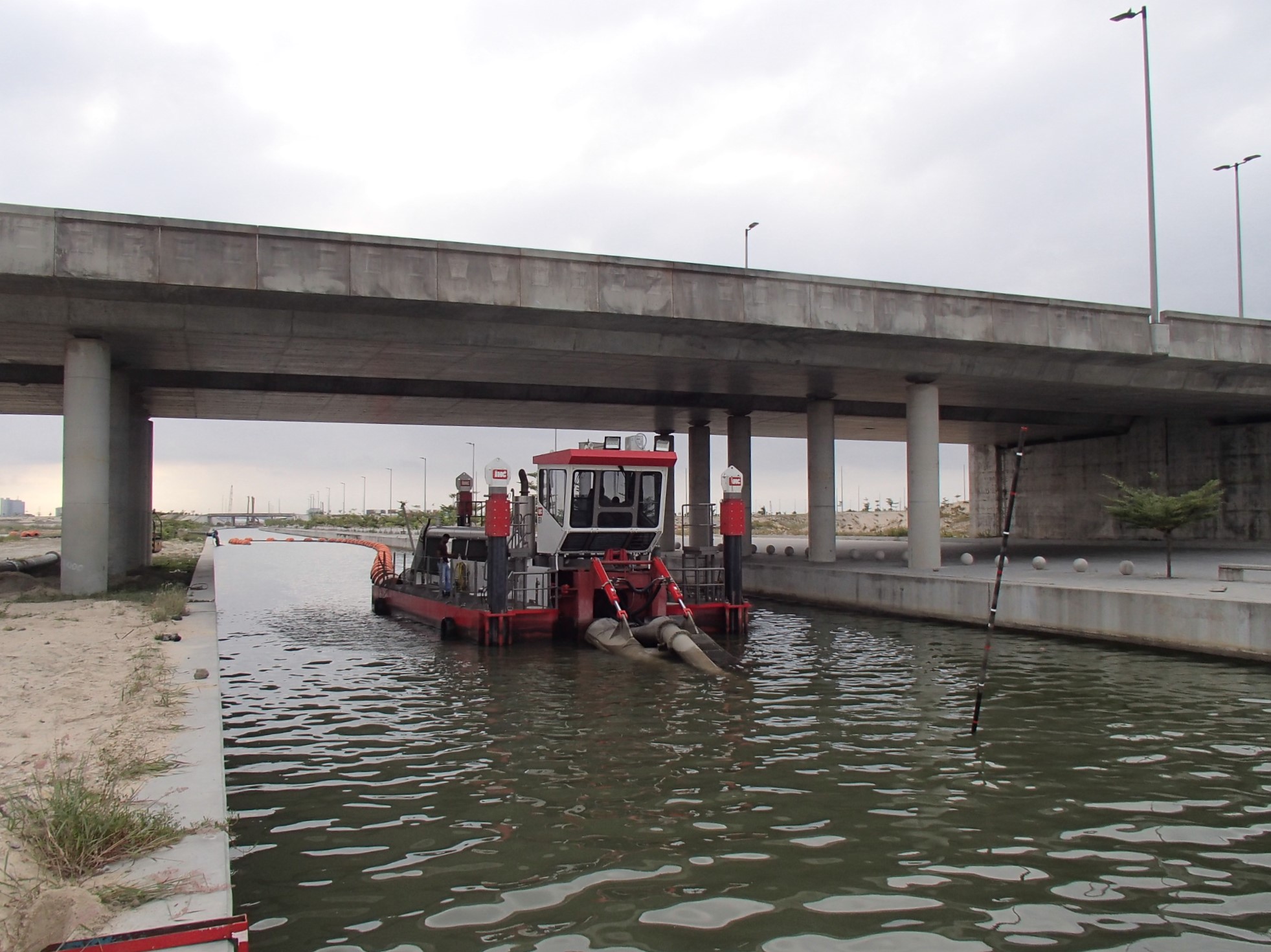Maintenance dredging

Maintenance dredging is one the most significant aspects of the dredging industry. Ports and estuaries are under constant threat of siltation. Tidal movements deposit sand and silt from the sea in port basins and waterways. Rivers also carry sediment in their flows, which tends to settle in these deltas. Due to these natural phenomena, the water depth gradually decreases. In order to safeguard a constant navigable depth, maintenance dredging is required.
Maintenance dredging challenges
Maintenance dredging faces it own set of challenges. Different dredging equipment can provide a solution for each of these challenges. A balanced dredging plan is therefore required.
Traffic
Ports experience heavy traffic from incoming and outgoing vessels. Dredging vessels can be disruptive. In this instance a trailing suction hopper dredger (TSHD) can be a solid choice. They are self-propelled and require no anchors or spuds while dredging. While carrying out their dredging tasks, TSHDs can merge with traffic and create virtually no hindrance to other vessels.
Debris
The presence of debris and dumped objects is a problem in dredging. Notorious items include lost anchors, fishing gear, bicycles and shopping carts, and sometimes even complete cars are found on the bottom of rivers, canals and harbours.
Mechanical dredgers, such as grab dredgers, are vital in places where heavy objects are likely to be found. Also, this type of dredger can be put to good use in confined places, such as small corners in harbours and behind jetties.
Cramp locations
In every major port there are smaller basins with less traffic. Larger vessels have difficulty getting there. In addition to this there are also many smaller ports and marinas. A different solution is required for these situations. Smaller stationary cutter suction dredgers or plain suction dredgers can be a good fit in these cases. Their reduced size makes them suitable for dredging smaller sites.
How does maintenance dredging work?
1. Project identification
After identifying an opportunity comes the planning phase. Figuring out the best way to approach a maintenance dredging project, determining the most optimal approach and equipment required in combination with the anticipated return on investment will provide an answer to the question: can and should we do it? It is during the project planning that an answer to that dilemma must be formed.
It is our aim to make sure that whatever project and approach you choose you will be successful. Royal IHC is able to assist in the very first phases of a project via consultancy, feasibility studies, setting up a preliminary business case and more.
2. Equipment selection
Once the general outline of a dredging project is known comes the phase of 'how exactly are we going to do this'? The practical side of the operation. Do we need a cutter suction dredger, trailing suction hopper dredger or perhaps smaller, more specialised equipment? What size should it be? How much will it cost and is there more we need to successfully execute this work? But also, is our crew skilled enough? Can we do this or do we need training or support beforehand?
Royal IHC has equipment available designed specifically for the conditions suitable for land reclamation
3. Execution
Now that everything is in place; the studies have proven it possible, equipment has been delivered and personnel can operate it, it is just a matter of doing the job. In this stage of a project other concerns arise such as how can we keep the operation running, can we optimize our process and, possibly, how can we grow our business, find new work and expand our fleet.

Are you ready to start your project?
Get in touch and we will help you get started.